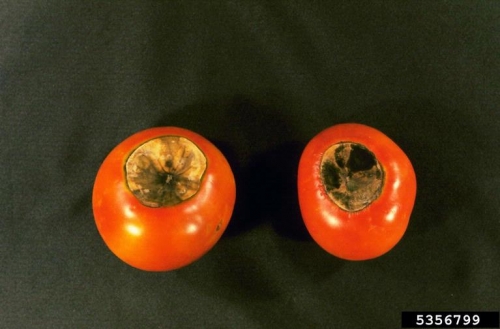Prevent blossom-end rot
Don’t be frustrated by this environmental disorder; instead consider these suggestions for prevention.
Blossom-end rot is a very frustrating environmental disorder of tomatoes, peppers and, less often, eggplant. The disorder is characterized by the far end, or the blossom-end, of the tomato, developing a black, water-soaked spot that expands and rots. This rot ruins the fruit and makes it unsuitable for eating.

Blossom-end rot. Photo credit: William M. Brown Jr., Bugwood.org
What causes blossom-end rot?
The cause of this rot is insufficient calcium in the fruit to form cell walls. The conditions that cause blossom-end rot are closely linked to inconsistent soil moisture (too wet or too dry) throughout the growing season. Calcium can only be moved into the fruit during development with an ample moisture supply. Too much water can also prevent calcium movement.
Other factors that can limit a plant’s ability to absorb enough calcium for proper fruit development include root damage due to cultivation, excessive nitrogen in the soil, cold soil or soil high in salts.
Suggestions for prevention
To prevent blossom-end rot, be sure there is an even moisture supply and never let the soil dry, then overwater, dry and then overwater. Mulching will help keep moisture levels even. However, mulch only with organic materials (not stone) and wait to mulch until after the soil has warmed up. Soil in southern Michigan usually warms up by mid-June. Don’t over fertilize, especially early in the season.
For small gardens, a method to ensure good drainage while retaining adequate moisture is to plant your tomato plant on a mound of soil with a high percentage of organic matter or compost. The organic matter will retain the moisture, while the elevation of the mound will provide good drainage. The elevated, darker colored mound will also warm up quicker.



 Print
Print Email
Email

